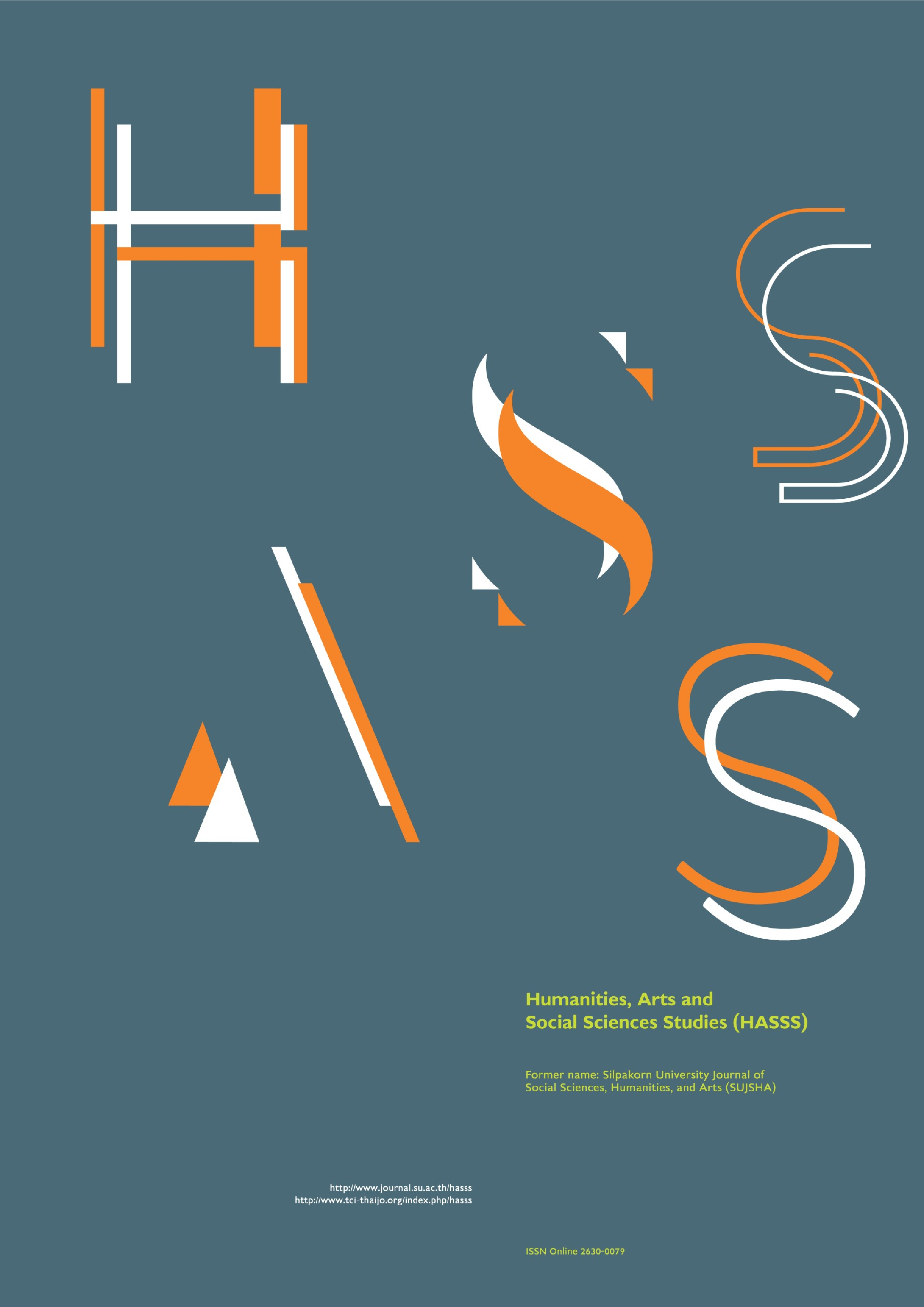The effect of gender models on genderless fashion photography
Main Article Content
Abstract
This research aims to explore how gender models affect consumers’ perceptions in order to benefit genderless fashion photography, which could provide alternative body image envisioning in a media landscape dominated by gender understandings. The fashion photography’s most straightforward goal is to enhance the garments’ presentation to potential consumers by associating the fashion design with the personal desires of suitable models. From Unisex to Genderless, the progressive issue proposes advanced concepts to eliminate the gender silhouette, resulting in a contradiction between concepts and images in genderless fashion photography. The research proposed ambivalent fashion photography and genderless fashion complex by reviewing genderless fashion, gender in photography, consumer imagination, and genderless fashion photography cases. It uncovered the concept of eliminating gender and solicited public opinion in support. The results of the survey comparing visible and invisible gender models in genderless fashion images indicate that the choice of models has a moderate impact on how the garments are perceived, but it has no effect on how the design is understood. Notably, employing invisible gender models to prioritize the garments themselves can create a space for gender neutrality and the designer’s vision. By focusing on the garments and experimenting with various photography styles, fashion brands can create a more inclusive and diverse representation of gender, exceeding customers’ preconceived notions. Beyond being a passing trend, genderless fashion reflects the desire of individuals to express their unique identities. The research highlights the potential for fashion photography to embrace genderless concepts in garment design and brand marketing, thereby contributing to more thorough investigations into fashion and gender inclusivity and fostering inclusivity in the fashion and gender spheres.
Downloads
Article Details

This work is licensed under a Creative Commons Attribution-NonCommercial-NoDerivatives 4.0 International License.
All rights reserved. Apart from citations for the purposes of research, private study, or criticism and review,no part of this publication may be reproduced, stored or transmitted in any other form without prior written permission by the publisher.
References
Aspers, P. (2005). Markets in fashion: A phenomenological approach. Taylor & Francis.
Attwood, T. (2017, August 24). Gender-fluid fashion: How brands came to embrace ‘ungendered’ clothing. Confidentials. https://confidentials.com/manchester/gender-fluid-fashion-how-brands-came-to-embrace-ungendered-clothing
Bardey, A., Achumba-Wöllenstein, J., & Chiu, P. (2020). Exploring the third gender in fashion: From consumers’ behavior to designers’ approach towards unisex clothing. Fashion Practice, 12(3), 421–439. https://doi.org/10.1080/17569370.2020.1816317
Chrisman-Campbell, K. (2015, April 14). A brief history of unisex fashion. The Atlantic. https://www.theatlantic.com/entertainment/archive/2015/04/when-unisex-was-the-new-black/390168/
Hourani, R. (2007). Gender-neutral patterns - 2005–2007. Rad Hourani. https://www.radhourani.com/gender-neutral-patterns-2005-2007
Kuo, Y.-P. (2021a). From unisex to agender: Alternative practice principles and element arrangement in fashion design [Unpublished doctoral dissertation]. Silpakorn University.
Kuo, Y.-P. (2021b). Yu Pei Kuo alternative genderless fashion collection. A’Design Award & Competition. https://competition.adesignaward.com/gooddesign.php?ID=121254&fbclid=IwAR0T3xJ91SvnCUtai1wXKaDcJMUEzVcWK6BAqqIoUZWTc-bAcWQ-x2VANrc
Kuo, Y.-P., Vongphantuset, J., & Joneurairatana, E. (2021). From Eastern inspiration to unisex fashion: A case study on traditional Chinese Shenyi attire. Humanities, Arts and Social Sciences Studies, 21(3), 535–546. https://so02.tci-thaijo.org/index.php/hasss/article/view/240070/170007
Misslin, F. (2020). Diagrammatic Manifestos: A method for studying the fluidity of gender in the production of fashion photography. Fashion Studies, 3(1), Article 6. https://doi.org/10.38055/fs030106
Olchawski, J. (2016). Sex equality state of the nation 2016. Fawcett Society.
Paoletti, J. B. (2012). Pink and blue: Telling the boys from the girls in America. Indiana University Press.
Paoletti, J. B. (2015). Sex and unisex: Fashion, feminism, and the sexual revolution. Indiana University Press.
Unisex. (n.d.). Merriam-Webster. https://www.merriam-webster.com/dictionary/unisex
Vita, A. D. (2015, May 18). Selfridges agender concept space. DapperQ. https://www.dapperq.com/2015/05/selfridges-agender-concept-space/
Zhou, B. (2015). Xiao fei xin li xue [Consumer psychology]. ECULTURE Co., Ltd. [in Chinese]


